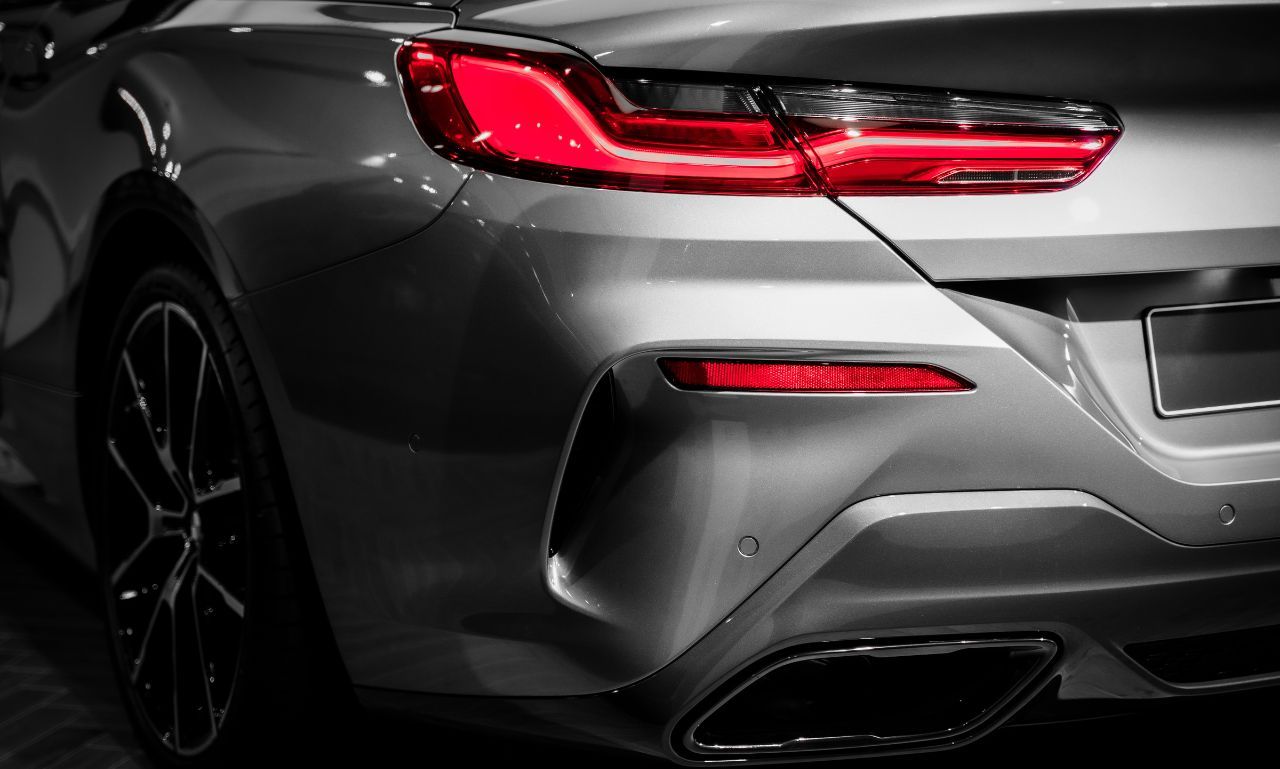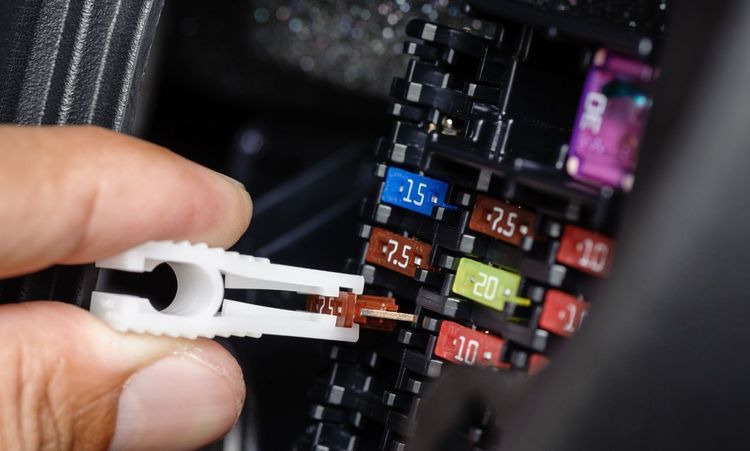There is nothing quite as frustrating as discovering your brake lights are stuck on, even when your foot is nowhere near the pedal. Not only is this annoying, but it can also quickly drain your battery and leave you stranded. As someone who's dealt with this exact issue in my vehicles, I understand the urgency of solving this problem.
In this comprehensive guide, I'll explain the most common causes of persistently illuminated brake lights and provide practical solutions to help you get back on the road safely.
Why Are My Brake Lights Staying On?

Brake lights that refuse to turn off typically indicate an electrical or mechanical issue within your braking system. These lights are designed to alert drivers behind you when you're slowing down, so when they remain on continuously, they're essentially sending the wrong message about your driving intentions.
Last summer, I was preparing for a road trip when I noticed a strange red glow reflecting off my garage wall. My brake lights were stuck on despite the car being parked for hours! After some troubleshooting, I discovered it was a simple switch issue that could have left me with a dead battery had I not caught it in time.
Let's explore the most common culprits behind this frustrating problem.
Common Causes of Brake Lights Staying On
Incorrect Light Bulbs
Sometimes, the simplest explanation is the correct one. Using the wrong type of bulbs in your brake light assembly can cause electrical inconsistencies that prevent them from turning off appropriately.
Always check your vehicle's manual for the exact specifications when replacing brake light bulbs. Using bulbs with incorrect wattage or design can create resistance issues that keep the circuit activated. Make sure you're using the manufacturer-recommended bulbs to avoid unnecessary electrical problems.
Electrical Issues in the Brake Light Circuit
Electrical problems are among the most common causes of stuck brake lights. These can range from simple to complex:
Blown Fuse: A blown fuse in your brake light circuit can cause erratic behavior. Check your vehicle's fuse box (typically located under the dashboard or in the engine compartment) and look for the brake light fuse. If it appears damaged or blown, replace it with a new one of the same amperage.
Loose Connections: Over time, vibrations from driving can loosen electrical connections. Inspect the wiring harness connected to your brake light assembly and ensure all connections are secure and corrosion-free.
Short Circuit: A short circuit anywhere in the brake light wiring can cause the lights to remain on. This often happens due to damaged wiring insulation, allowing wires to touch and create unwanted connections.
Broken Connection: Similar to loose connections, a broken wire in the brake light circuit can prevent the system from turning off appropriately.
Stuck Brake Pedal
A physical issue with your brake pedal mechanism can be the culprit behind constantly illuminated brake lights. When you press the brake pedal, a switch is activated to turn on your brake lights. The switch remains engaged if the pedal doesn't fully return to its resting position.
Check if your brake pedal feels different than usual – perhaps sticking slightly or not returning to its normal position. Look under the dashboard to see if any visible obstruction prevents the pedal from fully releasing.
Defective Brake Pedal Spring
Connected to the previous issue, a worn or broken return spring in your brake pedal assembly can prevent the pedal from properly returning to its resting position. This spring is responsible for pulling the pedal back up after you release it.
If the spring has lost tension or broken completely, the brake pedal may remain slightly depressed, keeping the brake light switch engaged. Replacing this spring is typically an inexpensive way to solve your persistent brake light issue.
Faulty Brake Light Switch

The brake light switch is the most common culprit behind brake lights that won't turn off. This switch is located near the top of the brake pedal and is designed to activate when the pedal is pressed and deactivate when released.
Over time, this switch can become worn, misaligned, or fail. It may send a constant signal to your brake lights when it malfunctions, keeping them illuminated regardless of pedal position.
I once spent hours diagnosing an electrical issue in my sedan, only to discover that the brake light switch had simply gotten out of proper alignment. A five-minute adjustment saved me hundreds in unnecessary repairs!
Low Brake Fluid Level
Modern vehicles often include sensors that monitor brake fluid levels. When these levels drop too low, some vehicles will activate the brake warning lights as a safety measure.
Check your brake fluid reservoir (typically in the engine compartment) to ensure it's filled appropriately. If it's consistently low despite refilling, you may have a leak in your brake system that requires immediate professional attention.
Faulty Parking Brake Switch
Your vehicle's parking brake (also called the emergency brake or hand brake) has a switch that activates the brake lights when engaged. If this switch malfunctions, the brake lights can stay on even when the parking brake is fully released.
Inspect the parking brake mechanism for any visible issues. Sometimes, the switch simply needs adjustment or replacement to resolve the problem.
Worn Brake Pads with Built-in Sensors
Some high-end vehicles and newer models include wear sensors in the brake pads that trigger warning lights when the pads have worn down to a certain threshold.
If your brake lights stay on and you haven't replaced your brake pads recently, this could be your vehicle's way of alerting you to worn brakes that need attention. Have your brake pads inspected and replaced if necessary.
ABS System Malfunction
Modern vehicles' Anti-lock Braking System (ABS) constantly monitors braking performance. When the ABS detects an issue, it may trigger warning lights on your dashboard and, in some cases, cause your brake lights to remain on.
ABS issues typically require professional diagnosis with specialized equipment, often involving complex electronic sensors and control modules.
Faulty Brake Pressure Sensors
Many modern vehicles include pressure sensors throughout the braking system to monitor performance. When these sensors malfunction, they can send incorrect signals to your vehicle's computer, potentially causing brake lights to stay illuminated.
Like ABS issues, problems with brake pressure sensors typically require professional diagnosis with specialized scanning tools.
How Do I Fix My Brake Lights Staying On?
Now that we've covered the potential causes, let's talk solutions:
1. Check and Replace the Brake Light Switch
The brake light switch is often the primary culprit and relatively easy to fix:
- Locate the switch near the top of your brake pedal assembly
- Inspecting for any visible damage or misalignment
- Test the switch's functionality with a multimeter if possible
- Replace the switch if necessary (typically an inexpensive part available at most auto parts stores)
2. Inspect the Brake Pedal Mechanism
Examine the entire brake pedal assembly for any issues:
- Check for obstructions preventing the pedal from fully returning
- Inspect the return spring for damage or wear
- Ensure the pedal moves freely through its full range of motion
- Clean and lubricate any sticky moving parts
3. Test and Replace Fuses
Electrical issues often start with fuses:
- Locate your vehicle's fuse box using the owner's manual
- Find the brake light fuse (typically labeled)
- Remove and inspect it for any signs of damage
- Replace with a new fuse of identical amperage if necessary
4. Check Brake Fluid Levels
Low brake fluid can trigger warning lights:
- Locate the brake fluid reservoir in your engine compartment
- Check that the fluid level is between the "MIN" and "MAX" marks
- If low, top off with the correct type of brake fluid for your vehicle
- Inspecting for any signs of leaks in the brake system
5. Professional Diagnosis for Complex Issues
If simple solutions don't resolve the problem, it's time to seek professional help.
- For ABS issues or sensor problems, visit a qualified mechanic with proper diagnostic equipment.
- Have the entire brake system inspected for any additional issues
- Consider a full electrical system check if the problem persists
Will Brake Lights Drain the Battery?

Yes, brake lights that stay on continuously will eventually drain your battery. Brake lights typically draw 15-30 watts each, and with usually three brake lights in modern vehicles, that's a significant power drain when left on for extended periods.
If your brake lights remain on for several hours while the engine is off, you'll likely return to a vehicle with a dead battery. This is why addressing stuck brake lights promptly is so important – not just for safety and legal reasons but also to prevent being stranded with a drained battery.
Regular Maintenance Prevents Problems
The best way to avoid brake light issues is through regular maintenance:
- Include brake light checks in your routine vehicle inspections
- Replace bulbs preemptively if they appear dim or inconsistent
- Have your entire brake system inspected annually
- Address any warning lights or unusual brake behavior immediately
Conclusion
Brake lights that stay on continuously are more than just an annoyance – they're a safety issue and potential battery drain that deserves prompt attention. By understanding the common causes and solutions outlined in this guide, you can diagnose and often fix the problem yourself, saving time and money on unnecessary repairs.
Remember that your brake system is one of your vehicle's most critical safety components. When in doubt, always consult with a qualified mechanic rather than risk a brake failure on the road.
Have you dealt with persistent brake lights before? What solution worked for you? Share your experience in the comments below!




